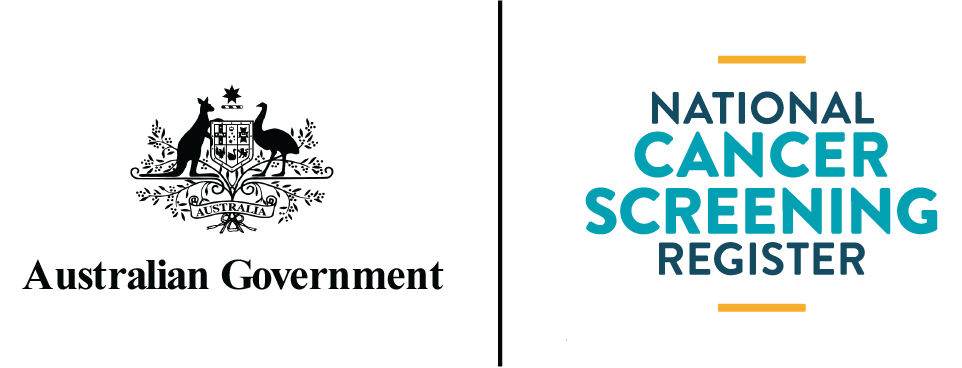Empowering Primary Care: Enhancing Cancer Screening with the NCSR

The National Cancer Screening Register (NCSR) is a key component in Australia’s efforts to reduce the impact of bowel and cervical cancer.
With the new National Lung Cancer Screening Program commencing in July 2025, now is the time for general practitioners (GPs) to ensure they are equipped to support eligible patients by integrating their clinical software with the NCSR or registering access to the Healthcare Provider Portal.
“General practice is the frontline of cancer prevention, and by integrating with the NCSR, healthcare providers can ensure seamless access to patient screening information.”
This means better tracking, timely interventions, and ultimately, improved patient outcomes,” said Professor Dorota Gertig, Medical Director of the NCSR.
Cancer screening saves lives by enabling early detection and timely intervention. As trusted healthcare professionals, GPs play a crucial role in guiding patients through the screening journey.
The NCSR provides a streamlined way for primary care providers to access and manage patient screening information efficiently, helping to ensure that no eligible patient misses the opportunity for early detection.
Practices who are taking advantage of the NCSR’s digital channels are seeing tangible benefits in both patient care and practice efficiency:
- 22% increase in digitally submitted screening data over the past six months.
- 93% of cervical screening histories now accessed digitally, reducing reliance on manual processes.
- 94% decrease in faxed screening history requests, streamlining administrative tasks.
By leveraging the NCSR’s digital channels, healthcare providers are not just improving practice efficiency, they’re contributing to a nationwide effort to reduce deaths from bowel and cervical cancer, and soon – lung cancer.
The NSCR enables healthcare providers to:
- Securely access patient screening information – including overdue and follow-up alerts, to help ensure your patients remain on track.
- Stay up to date with patient screening statuses – facilitating proactive conversations about participation and the benefits of early detection.
- Facilitate bowel screening test completion – order bowel screening kits for your patients’ and record when a kit has been issued during a consultation.
- Submit clinical information – such as colonoscopy, colposcopy, and histopathology results.
- Update patient details – to ensure accurate records and effective communication from the national screening programs.
- Nominate providers and personal representatives – to improve coordination of patient care.
The NCSR is committed to continuously improving the experience of using the NCSR integration. We actively seek feedback from NCSR Hub users to identify opportunities for enhancement.
As part of this process, all feedback is carefully analysed and validated by GPs to ensure that improvements align with clinical needs and workflow efficiencies.
This ongoing refinement has led to key enhancements, including:
- A new total hysterectomy form to streamline data submission and ensure the NCSR doesn’t unnecessarily remind participants for screening.
- Improvements to the registration process within PRODA for a smoother onboarding experience.
- A simplified process for issuing bowel screening test kits to patients.
- Speed and performance enhancements to improve overall system responsiveness.
We remain dedicated to working closely with healthcare providers to enhance NCSR channels, making it easier to support engagement with the cancer screening programs.
“We’re committed to listening to GPs and practice staff to make the NCSR as effective as possible,” said Prof. Gertig.
“The latest enhancements reflect real feedback from clinicians, helping to ensure the NCSR fits into daily workflows.”
Primary Care Onboarding Kit
To help GPs and primary care practices make the most of these digital tools, we have developed a Primary Care Onboarding Kit.
This kit provides step-by-step guidance, including walkthrough videos, on:
- Integrating your clinical software
- Registering access for the Healthcare Provider Portal
- Leveraging the NCSR to enhance patient care
GPs can engage with the NCSR through two primary channels:
1. Clinical software integration:
Practices using Best Practice, MedicalDirector, or Communicare can integrate directly with the NCSR, enabling real-time access to screening histories and the ability to submit clinical information within their everyday workflow.
2. Healthcare Provider Portal:
GPs and practice staff can register for the portal via PRODA, gaining secure access to screening records and program correspondence.
Nurses and medical practice staff who do not have a Medicare Provider number (MPN) can be given delegate access by an existing Healthcare Provider Portal user with an MPN.
Now is the time to join the growing network of providers using the NCSR to support these life-saving cancer screening.
Preparing for the National Lung Cancer Screening Program
Lung cancer remains the leading cause of cancer-related deaths in Australia, but early detection dramatically improves survival rates.
The upcoming National Lung Cancer Screening Program will offer low-dose CT scans to asymptomatic high-risk individuals aged 50–70, with GPs playing a vital role in identifying and enrolling eligible patients.
“Lung cancer screening will be a game-changer in early detection,” added Prof. Gertig.
“With the program commencing in July 2025, now is the time for practices to get ready by integrating their software or registering for the Healthcare Provider Portal to support eligible patients.”

To ensure your practice is ready:
1. Integrate your clinical software:
If your practice uses Bp Premier, MedicalDirector or Communicare, you can integrate directly with the NCSR. Before enabling the integration within your software, you’ll need to register your practice via the Healthcare Provider Portal. Ensure you have an active HPI-O number and NASH certificate ready when starting the registration process.
2. Register for the Healthcare Provider Portal:
If your clinical software isn’t compatible with NCSR integration, we recommend accessing the Healthcare Provider Portal. A PRODA account is required, and access can be delegated to administrative staff.

